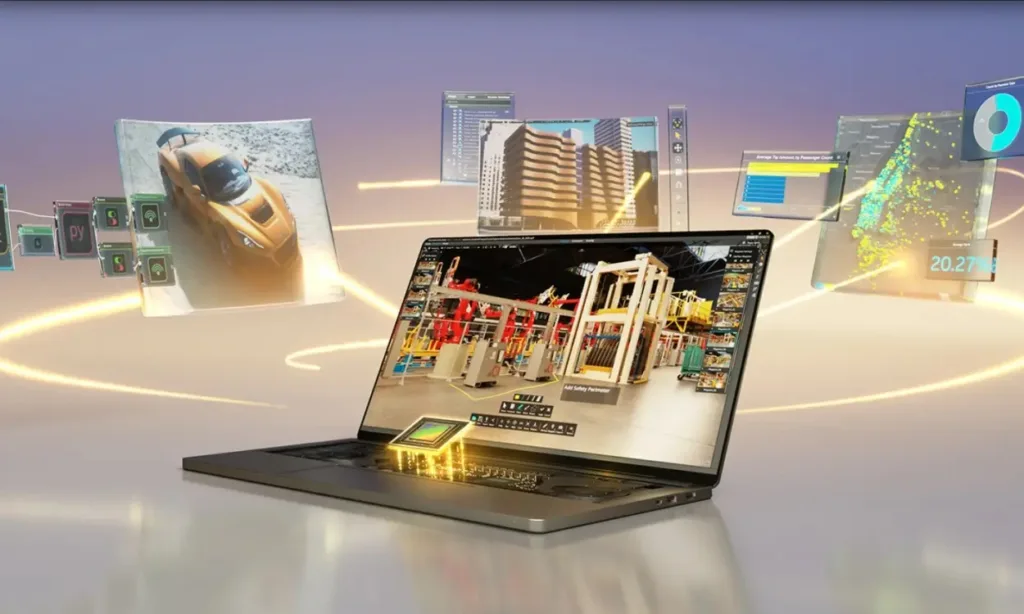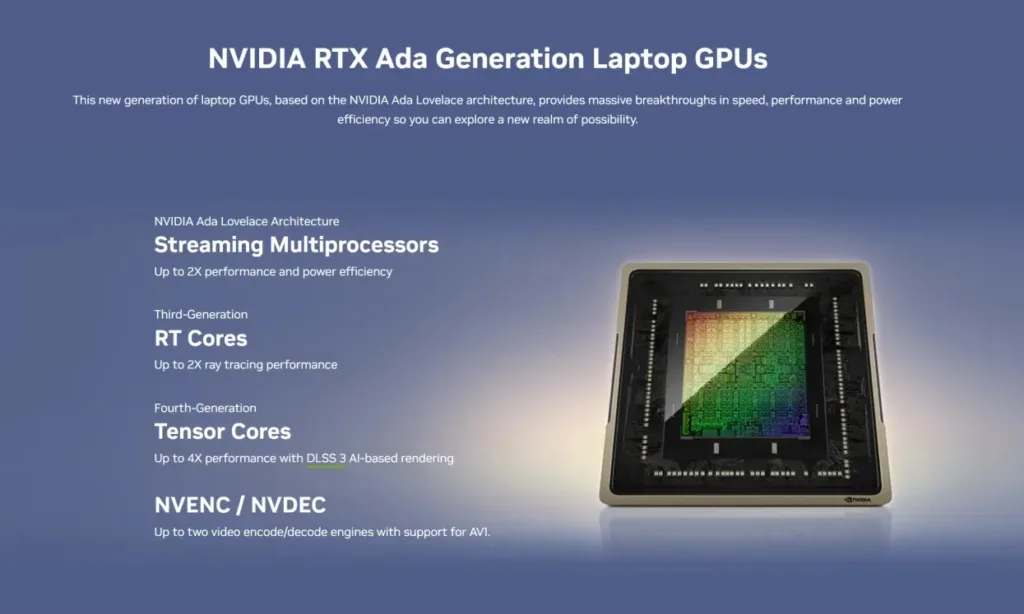
Nvidia recently introduced two new GPUs, the RTX 500 and RTX 1000, designed for upcoming RTX professional laptops. These GPUs are slated for a Spring 2024 launch and will cater to workstation-centric tasks like manufacturing, product design, engineering, and AI acceleration.
Leading manufacturers such as HP, Dell, MSI, and Lenovo are expected to be among the first to offer “mobile workstations” featuring these Nvidia GPUs. These laptops will provide ample computing power for on-the-go professionals handling demanding workloads.
Nvidia RTX 500 & RTX 1000 GPUs: AI Performance & Features
The new laptop GPUs offer distinct features, with the RTX 500 boasting 4GB of GDDR6 memory and the RTX 1000 equipped with 6GB GDDR6. Nvidia highlights these GPUs as optimal choices for AI-accelerated workflows, targeting a different market segment compared to GeForce GPUs like the RTX 4060 commonly found in mid-range gaming laptops.
Both the RTX 500 and RTX 1000 GPUs feature 3rd-generation RT Cores and 4th-generation Tensor Cores. They also support the latest AV1 encoder with NVENC, delivering higher efficiency compared to the older H.264 standard. Additionally, they come with DLSS 3 support, Nvidia’s AI-powered frame generation technology.

The RTX 500 and RTX 1000 laptop GPUs will enhance performance for tasks like video calls with AI effects enabled. These GPUs feature an on-board neural processing unit (NPU) designed to handle lighter AI workloads, working alongside the Tensor cores for AI acceleration.
Nvidia claims that the new RTX 500 can deliver “up to 14x” better performance in generative AI tasks like Stable Diffusion compared to a CPU alone. In 3D rendering, a 10x performance improvement is highlighted.
Here’s a performance comparison of Nvidia’s Ada Lovelace architecture-based RTX professional laptop GPU lineup, measured in TOPS:

Nvidia’s RTX 500 & RTX 1000 Laptop GPUs: Specs
Nvidia’s latest RTX 500 and 1000 GPUs are based on the Ada Lovelace architecture, expanding the lineup of workstation-centric GPUs that includes the RTX 5000, 4000, 3500, 3000, and 2000. Here are the specifications for the new GPUs:

There’s a possibility of new laptops featuring the RTX 1000 GPU with higher graphics power limits (140W), but such designs may sacrifice portability. These new professional RTX laptop GPUs will provide more options for the productivity-focused audience in the market.
What are your thoughts on Nvidia’s RTX 500 and RTX 1000 laptop GPUs? Let us know in the comments below.

0 Comments